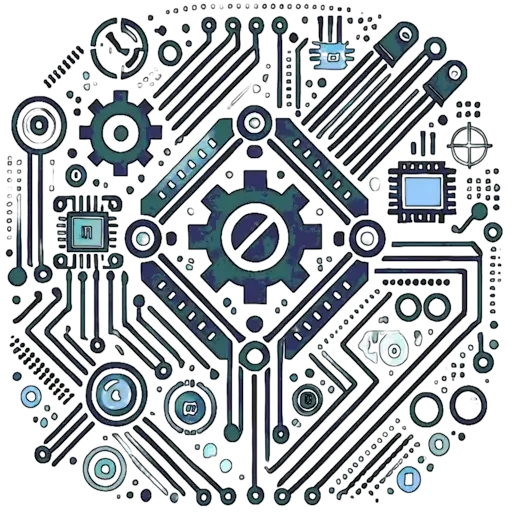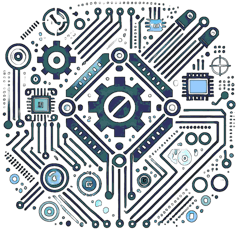

Difficulty Level: Intermediate
This project will guide you through building a basic home automation system using the NodeMCU (ESP8266). You will be able to control lights, fans, or other appliances remotely over Wi-Fi through a simple web interface.
Connect the relay module to the NodeMCU as follows:
Each relay channel controls one appliance, and the relays are connected in parallel with the appliances.
The following code will enable control of the relays via a web interface hosted on the NodeMCU.
digitalWrite(): Sets the GPIO pins high or low to turn the relay on or off.WiFi.begin(): Connects the NodeMCU to your Wi-Fi network.server.on(): Defines the web server routes for controlling devices.Here’s the Arduino code for controlling home appliances through relays using NodeMCU:
#include
#include
const char* ssid = "YOUR_SSID";
const char* password = "YOUR_PASSWORD";
ESP8266WebServer server(80);
// Relay pins
const int relay1 = 5; // D1
const int relay2 = 4; // D2
const int relay3 = 14; // D5
const int relay4 = 12; // D6
void setup() {
Serial.begin(115200);
// Set relay pins as outputs
pinMode(relay1, OUTPUT);
pinMode(relay2, OUTPUT);
pinMode(relay3, OUTPUT);
pinMode(relay4, OUTPUT);
// Start with all relays off
digitalWrite(relay1, HIGH);
digitalWrite(relay2, HIGH);
digitalWrite(relay3, HIGH);
digitalWrite(relay4, HIGH);
// Connect to Wi-Fi
WiFi.begin(ssid, password);
while (WiFi.status() != WL_CONNECTED) {
delay(1000);
Serial.println("Connecting to WiFi...");
}
Serial.println("Connected to WiFi");
// Define routes for controlling appliances
server.on("/", handleRoot);
server.on("/relay1/on", []() {
digitalWrite(relay1, LOW); // Relay ON
server.send(200, "text/plain", "Relay 1 ON");
});
server.on("/relay1/off", []() {
digitalWrite(relay1, HIGH); // Relay OFF
server.send(200, "text/plain", "Relay 1 OFF");
});
// Similar routes for other relays
server.on("/relay2/on", []() {
digitalWrite(relay2, LOW);
server.send(200, "text/plain", "Relay 2 ON");
});
server.on("/relay2/off", []() {
digitalWrite(relay2, HIGH);
server.send(200, "text/plain", "Relay 2 OFF");
});
server.on("/relay3/on", []() {
digitalWrite(relay3, LOW);
server.send(200, "text/plain", "Relay 3 ON");
});
server.on("/relay3/off", []() {
digitalWrite(relay3, HIGH);
server.send(200, "text/plain", "Relay 3 OFF");
});
server.on("/relay4/on", []() {
digitalWrite(relay4, LOW);
server.send(200, "text/plain", "Relay 4 ON");
});
server.on("/relay4/off", []() {
digitalWrite(relay4, HIGH);
server.send(200, "text/plain", "Relay 4 OFF");
});
server.begin(); // Start the server
}
void loop() {
server.handleClient();
}
void handleRoot() {
String html = "Home Automation Control
"
"Turn ON Relay 1
"
"Turn OFF Relay 1
"
"Turn ON Relay 2
"
"Turn OFF Relay 2
"
"Turn ON Relay 3
"
"Turn OFF Relay 3
"
"Turn ON Relay 4
"
"Turn OFF Relay 4
";
server.send(200, "text/html", html);
}
YOUR_SSID and YOUR_PASSWORD with your Wi-Fi credentials.In this project, we built a home automation system using NodeMCU, a relay module, and a web interface. This setup allows you to control multiple appliances remotely over Wi-Fi. You can expand this project further by integrating sensors or adding more devices to the system.

If you have any questions or inquiries, feel free to reach out to us at Microautomation.no@icloud.com .
Follow our Socials for the newest updates!